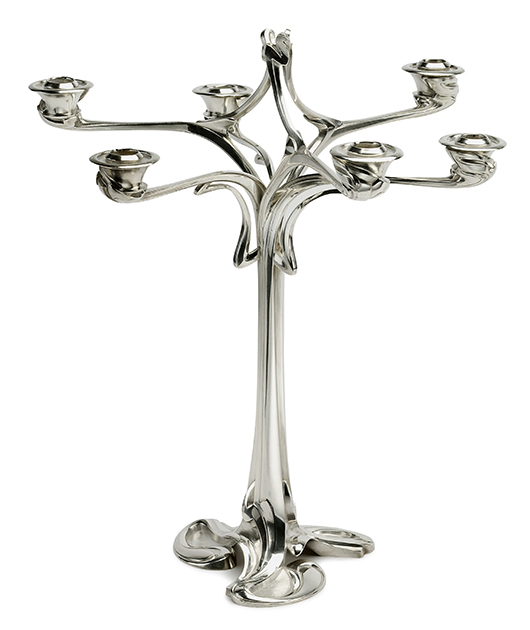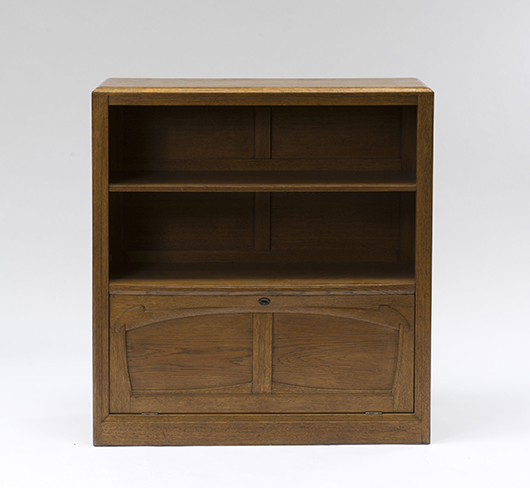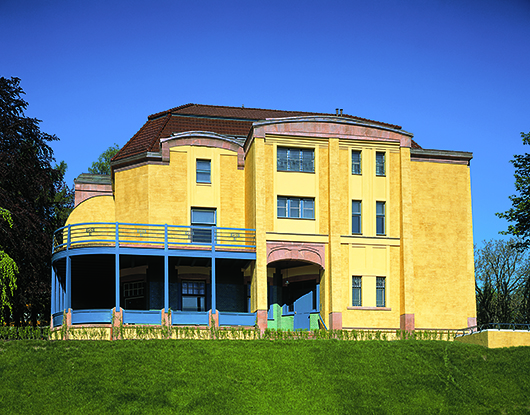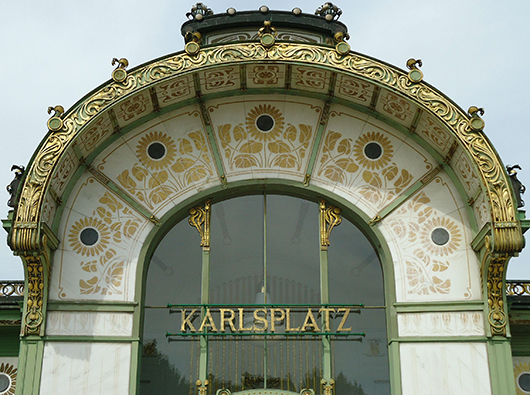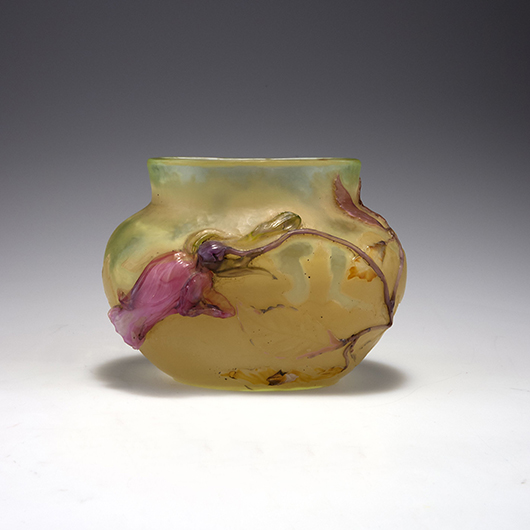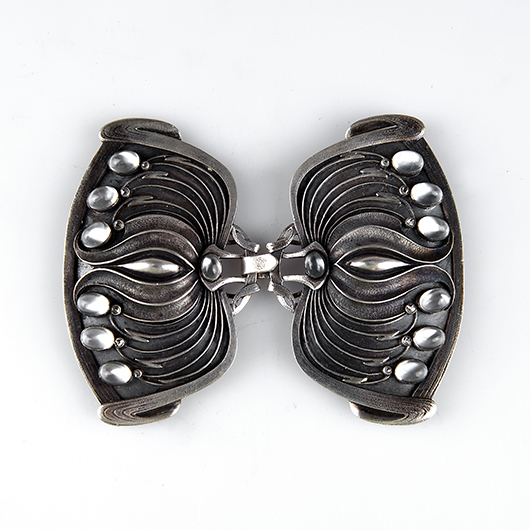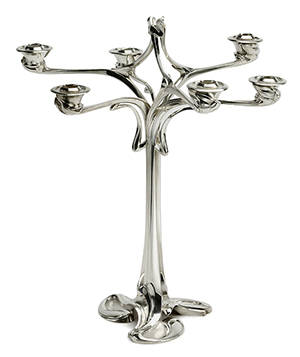
MUNICH – Jugendstil was an invisible lightning strike that caused a complete about-face in artistic style. Sometime around 1890, it appeared in Germany like a blossoming vine and twined itself around Historicism, obliterating its classical-lines with the sinuous curves of nature. The new style, also known as Art Nouveau, was a synchronicity that touched Gustaf Klimt and the Secessionist artists in Vienna, painter Alphonse Muncha in Moravia, illustrator Audrey Beardsley in England, and glass artist René Lalique in France. It even negotiated the Atlantic Ocean, appearing in the designs of Louis Comfort Tiffany in New York.
At the forefront of the Jungendstil movement was Belgian-born artist and architect Henry van de Velde. In celebration of the 150th anniversary of his birth, Quittenbaum Kunstautionen, Munich, has planned a special auction Dec. 10 featuring his work.
“The 150th birthday is being celebrated by many museums, and since our strength is Jungendstil, we thought we must have an auction,” noted Managing Director Askan Quittenbaum.
Although he admitted it was not easy to accumulate a large number of works from such a well-loved and enthusiastically collected designer, the auction house has managed to gather a respectable selection of Van de Velde objects, rounding out the sale with exquisite works by contemporaries such as glass artist Emile Gallé and architect and designer Josef Hoffmann.
“Henry van de Velde saw it as a challenge to design the entire artwork from a to z,” said Quittenbaum. “He was using the same methods as William Morris in the Arts and Crafts movement, which just isn’t the case with artists today,” said Quittenbaum.
Indeed Van de Velde, who had studied painting in Antwerp, left this path to embrace the fuller possibilities of architecture and design. His use of flowing curves caught the eye of Karl Ernst Osthaus, founder of the Volkwang Museum, who asked him to design the museum’s interior.
Shortly after 1900 Van de Velde became director of the Groβherzoglich Sächsischen Kunstgewerbeschule in Weimar, a post he held until 1915. In 1919 the school was renamed Bauhaus, expanding upon Van de Velde’s theory that even useful objects could be well-designed works of art.
Perhaps managing so many different artistic disciplines at the school inspired Van de Velde, for he was as comfortable drawing the sweeping lines of a house as he was designing a book cover, clothing, cutlery or china. Like architect and designer Frank Lloyd Wright, he viewed well-designed accessories as an integral and harmonious part of the entire architectural object.
Quittenbaum’s offers a couple of these lovingly designed details, such as Lot 28, a swooping brass door handle from Hair Salon Haby in Berlin, 1901. Lot 61 is four simple silk handkerchiefs embroidered with a Van de Velde designed monogram, created at the same time as a set of table linens for the grandparents of painter Curt Herrmann, circa 1906.
To see how architecture and art united in a van de Velde project, Jungendstil enthusiasts can tour several historic sites. Weimar highlights include Haus Hohe Pappeln, the home he designed for his wife and five children in Weimar, 1907; the Friedrich Nietzsche Archives, where he was asked to redesign the interior by the late philospher’s sister in 1902; and naturally the former Kunstgewerbeschule.
In Villa Esche, designed for industrialist Herbert Esche in 1902-03 in Chemnitz, one gets a good sense of what it was like to live surrounded by the work of Henry van de Velde. The museum also documents the type of friendly working relationship Van de Velde had with many of his clients. www.villaesche.de
Upcoming Auctions:
Dorotheum: 3 Dec. – Antique pipes to be auctioned in Prague, Czech Republic. Dec. 4 – art, antiques and jewelry, to be auctioned in Klagenfurt. www.Dorotheum.com
Hauswedell & Nolte, Hamburg: 3 Dec. – Modern Art Parts I and II. Dec. 4 – art after 1945. www.Hauswedell-Nolte.de
Bassenge Photoauktionen und Moderne Kunst, Berlin: Dec. 4. – an important American private collection, photography books and literature, photography of the 19th – 21st centuries. www.Bassenge.com
Anticomondo, Cologne: Dec. 6-7 – toy and advertising auction. www.Anticomondo.de
Kusthaus Lempertz, Cologne: Dec. 6-7 – Asian art from China, Tibet/Nepal, India, Southeast Asia, Korea and Japan. www.Lempertz.com
Leipziger Münzhandlung Auktion H. Höhn: Dec. 6-7 – coin auction in Radisson Blu Hotel, Leipzig www.Numismatik-Online.de
Schmidt Kunstauktionen Dresden: Dec. 7 – artworks of the 15th – 21st centuries. www.Schmidt-Auktionen.de
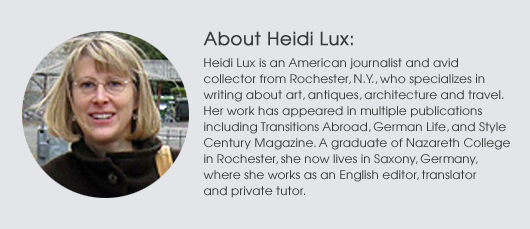
ADDITIONAL IMAGES OF NOTE
